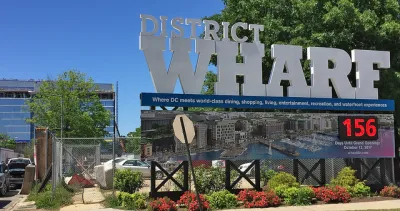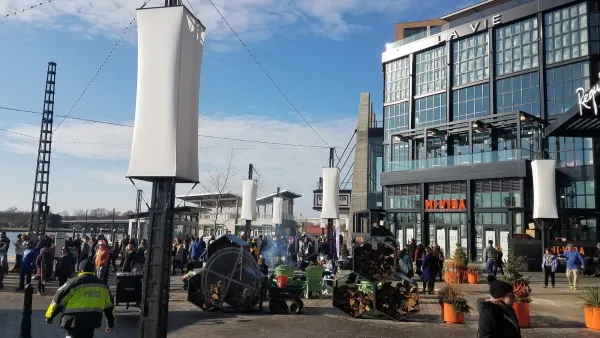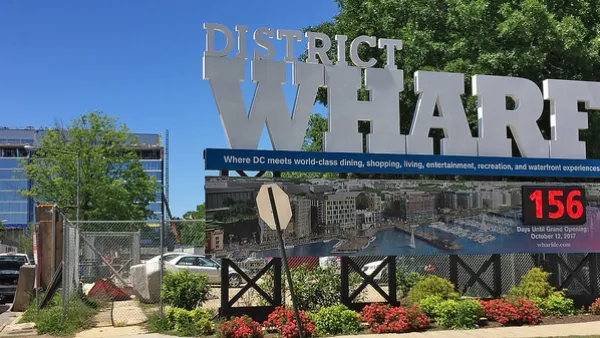Looking back to evaluate the potential of the present.

Jonathan O'Connell presents a history of the Washington, D.C. waterfront—made increasingly relevant as the mega-development known as The Wharf continues to take shape.
Here's how O'Connell describes the The Wharf, after taking a tour of the property with developer Monty Hoffman back in September, just prior to the opening of the project's first phase.
All told, when the second phase is completed in 2022, there will be a mile of waterfront on 24 acres of land, 50 acres of riparian rights in the channel, 1,375 residences, 945,000 square feet of office space, 800 rooms in four hotels, 2,500 parking spaces, and 10 acres of parks and open spaces.
At a cost of $2.5 billion, the Wharf is one of the most aggressive efforts in recent memory by the District, maybe by any city, to reinvent a waterfront. It also happens to be located near the site of a previous, infamous attempt at urban transformation: In the 1950s, the federal and local governments leveled thousands of buildings in Southwest and, according to the D.C. Preservation League, forced a total of 23,000 residents and 1,500 businesses to move. They then built a mass of brutalist-style housing complexes around a retail center, Waterside Mall. Little remained beyond the Maine Avenue fish market and a handful of churches. Southwest, the boyhood stomping ground of Marvin Gaye, eventually became a case study of everything urban renewal got wrong about cities and people.
Much of the article, however, focuses on the history of waterfront development in Washington, D.C. and the precedent set by the Inner Harbor in Baltimore. The big question O'Connell means to provide context for is whether The Wharf will finally change the narrative of planning and development failures on the waterfront of the nation's capital.
FULL STORY: Do posh waterfronts make a city world-class? D.C. is betting hundreds of millions on it.

Analysis: Cybertruck Fatality Rate Far Exceeds That of Ford Pinto
The Tesla Cybertruck was recalled seven times last year.

National Parks Layoffs Will Cause Communities to Lose Billions
Thousands of essential park workers were laid off this week, just before the busy spring break season.

Retro-silient?: America’s First “Eco-burb,” The Woodlands Turns 50
A master-planned community north of Houston offers lessons on green infrastructure and resilient design, but falls short of its founder’s lofty affordability and walkability goals.

Test News Post 1
This is a summary

Analysis: Cybertruck Fatality Rate Far Exceeds That of Ford Pinto
The Tesla Cybertruck was recalled seven times last year.

Test News Headline 46
Test for the image on the front page.
Urban Design for Planners 1: Software Tools
This six-course series explores essential urban design concepts using open source software and equips planners with the tools they need to participate fully in the urban design process.
Planning for Universal Design
Learn the tools for implementing Universal Design in planning regulations.
EMC Planning Group, Inc.
Planetizen
Planetizen
Mpact (formerly Rail~Volution)
Great Falls Development Authority, Inc.
HUDs Office of Policy Development and Research
NYU Wagner Graduate School of Public Service



























